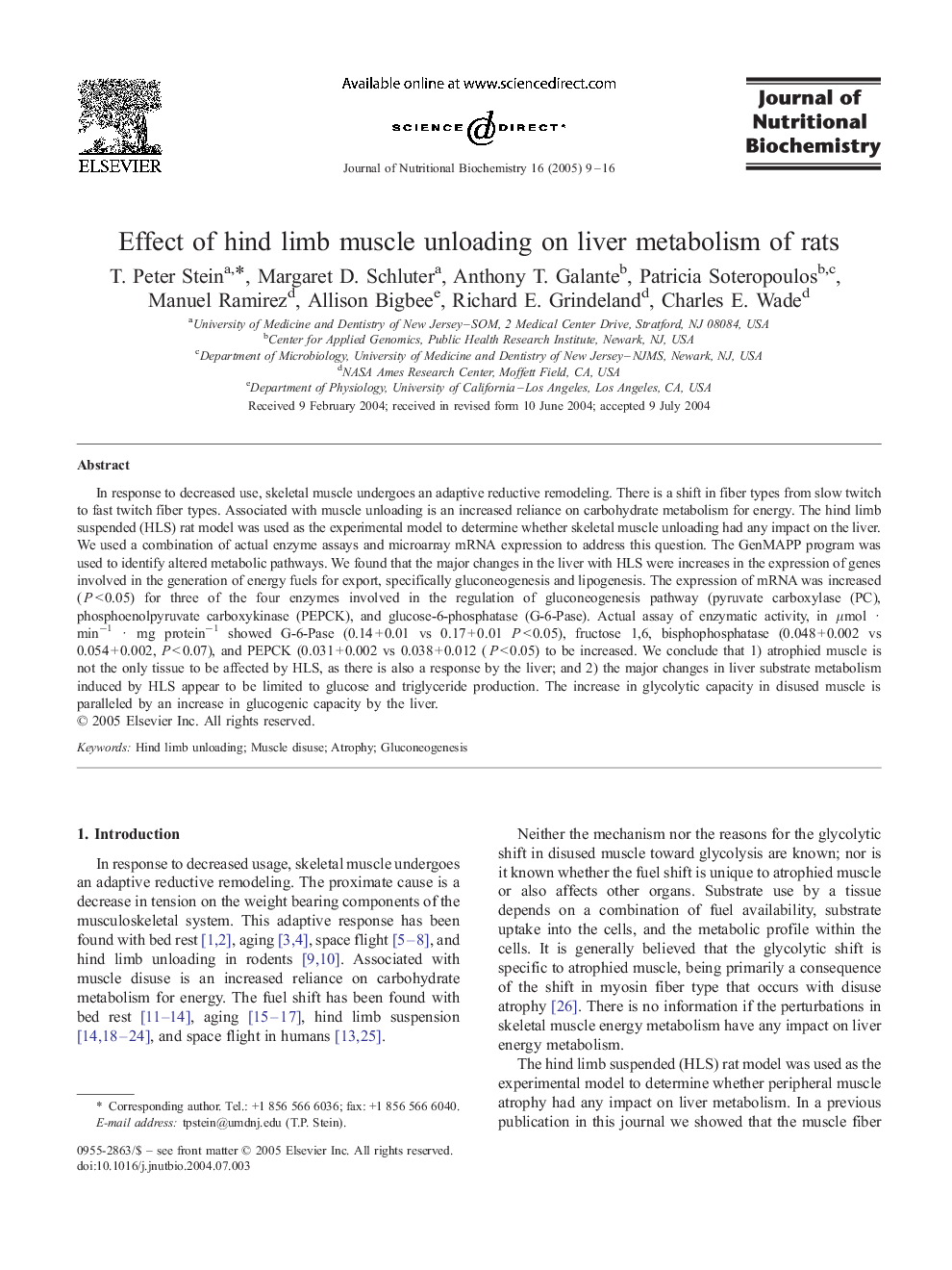| Article ID | Journal | Published Year | Pages | File Type |
|---|---|---|---|---|
| 9891611 | The Journal of Nutritional Biochemistry | 2005 | 8 Pages |
Abstract
In response to decreased use, skeletal muscle undergoes an adaptive reductive remodeling. There is a shift in fiber types from slow twitch to fast twitch fiber types. Associated with muscle unloading is an increased reliance on carbohydrate metabolism for energy. The hind limb suspended (HLS) rat model was used as the experimental model to determine whether skeletal muscle unloading had any impact on the liver. We used a combination of actual enzyme assays and microarray mRNA expression to address this question. The GenMAPP program was used to identify altered metabolic pathways. We found that the major changes in the liver with HLS were increases in the expression of genes involved in the generation of energy fuels for export, specifically gluconeogenesis and lipogenesis. The expression of mRNA was increased (P<0.05) for three of the four enzymes involved in the regulation of gluconeogenesis pathway (pyruvate carboxylase (PC), phosphoenolpyruvate carboxykinase (PEPCK), and glucose-6-phosphatase (G-6-Pase). Actual assay of enzymatic activity, in μmol · minâ1 · mg proteinâ1 showed G-6-Pase (0.14+0.01 vs 0.17+0.01 P<0.05), fructose 1,6, bisphophosphatase (0.048+0.002 vs 0.054+0.002, P<0.07), and PEPCK (0.031+0.002 vs 0.038+0.012 (P<0.05) to be increased. We conclude that 1) atrophied muscle is not the only tissue to be affected by HLS, as there is also a response by the liver; and 2) the major changes in liver substrate metabolism induced by HLS appear to be limited to glucose and triglyceride production. The increase in glycolytic capacity in disused muscle is paralleled by an increase in glucogenic capacity by the liver.
Keywords
Related Topics
Life Sciences
Biochemistry, Genetics and Molecular Biology
Biochemistry
Authors
T.Peter Stein, Margaret D. Schluter, Anthony T. Galante, Patricia Soteropoulos, Manuel Ramirez, Allison Bigbee, Richard E. Grindeland, Charles E. Wade,
